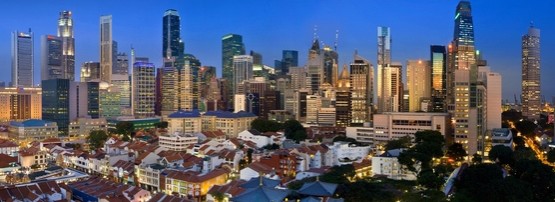
I recently attended a Forum on Internet of Things in Smart Sustainable Cities: A New Age of Smarter Living staged in Singapore on 18 January 2016. The public forum provided a contextual overview to the second meeting of the ITU Study Group 20: IoT and its applications including Smart Cities and Communities which took place back-to-back with the Forum.
IP-based networks are a key component in the Internet of Things (IoT) as it is the only technology to offer ubiquitous, cost-effective connectivity. IPv6-based networks bring the virtually unlimited addressing scalability required for smart cities as we move from the current 13 billion devices connected to the Internet today to the predicted 50 billion devices expected to be networked by 2025.
The opening ceremony included a keynote address by H.E. Yaacob Ibrahim, Minister for Communications and Information, Singapore, in which he spoke about the economy’s Smart Nation Initiative. Singapore, he noted, was perfectly positioned to extend the vision of a smart city to a national level.
He also used the address to publicly announce two local initiatives. First, to undertake a re-organization of the IDA and MDA into two new agencies, a converged regulator, the Infocomm Media Development Authority (IMDA) and the Government Technology Office (name to be confirmed).
The other announcement made by the Minister in his opening speech was of a trial of e-SIM technologies, which are seen as a potential component of IoT sensor communications. He said:
“IDA will be embarking on a trial to see how an open GSMA standard can enable e-SIM chips to switch between different mobile network operators. This trial will be conducted in partnership with PUB, Singapore’s water agency, and will involve the mobile network operators. Such a standard will allow M2M businesses, and potentially consumers with e-SIM equipped smartphones, to switch network providers more flexibly.”
The packed forum agenda, jointly hosted by the International Telecommunications Union and the Singapore Infocomm Development Authority included 15 speakers covering a range of smart city topics from personal data privacy and security to big data analysis and enabling infrastructure.
Dr. Chaesub Lee, Director of the ITU’s Telecommunication Standardization Bureau, explained that the evolution of smart, sustainable cities is critically important because such a high percentage of the world’s population live in cities. He stressed the importance of the many stakeholders required to build smart cities and urged vertical industries to work together toward the goal. “In the context of smart cities,” he said, “we can not allow silos to develop between sectors. Common standards and interoperability will help us achieve horizontal integration allowing systems to interconnect and share data.”
His emphasis on the importance of cities was reiterated by Nasser Saleh Al Marzouqi, Chairman of ITU-T Study Group 20, who employed statistics to illustrate the point. Cities, he said, produce 70% of global greenhouse emissions as they use up two-thirds of global energy demand to produce 80% of global GDP.
“We don’t have any option other than to move to smart cities,” he said, noting that the big challenge was for cities to maintain their contribution to global GDP while becoming more sustainable by improving waste and water management, traffic and mobility systems, electricity supply, safety and cultural facilities.
Every city has different needs, which are dictated by their individual demographic and geographic characteristics, he said. So, while the goal of the Study Group is to create standards, he advised that the first step in his recipe for starting a smart city is to engage all stakeholders and formalize the collaboration processes.
The views expressed by the authors of this blog are their own and do not necessarily reflect the views of APNIC. Please note a Code of Conduct applies to this blog.
